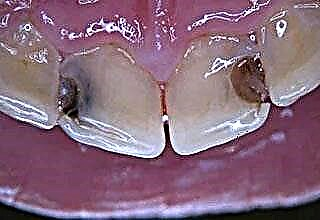 In most cases, purulent foci are formed only on one side of the oropharynx as a result of inflammation of the tonsil.
In most cases, purulent foci are formed only on one side of the oropharynx as a result of inflammation of the tonsil.
Paratonsillitis is a secondary disease that occurs 5-7 days after infection of the glands.
The development of a purulent abscess is facilitated by a decrease in the body's resistance, autoimmune disorders and a deficiency of vitamins in the body. Delayed treatment of pathology entails extensive tissue edema, which can lead to stenosis of the pharynx.
Etiology of the disease
What is a paratonsillar abscess? A peri-mucosa abscess (phlegmonous tonsillitis) is provoked mainly by pyogenic bacteria. With purulent inflammation of lymphadenoid formations, pathogenic microbes localized in the lacunae and follicles of the glands penetrate into the periaminal fiber. Pathological processes lead to loosening and swelling of tissues, as a result of which hypertrophy of the mucous membranes is observed.
A key role in the development of pathology is played by a decrease in local and general immunity, which is facilitated by:
- hypovitaminosis;
- chronic inflammation of the ENT organs;
- violation of metabolic processes;
- autoimmune disruptions;
- irrational intake of medications;
- pericoronitis (inflammation of the gums);
- chronic sinusitis;
- diabetes;
- secondary immunodeficiency.
With the development of paratonsillitis, pathogens infect the tissues surrounding the tonsils. With the blood flow, a large number of immune cells (neutrophils, phagocytes) penetrate into the foci of inflammation, which destroy pyogenic bacteria. In connection with a violation of the drainage function of lymphoid formations, purulent exudate begins to accumulate in the peri-mucous tissue, as a result of which an abscess is formed.
Clinical picture
Phlegmonous tonsillitis is characterized by an acute onset, however, the first signs of inflammation of the peri-mucous tissue appear several days before the formation of abscesses. As the disease progresses, patients begin to complain of unilateral pain in the tonsil region, which only gets worse over time.
How to understand that a paratonsillar abscess has developed? The symptoms of the disease are specific, the development of pathology is often indicated by:
- lockjaw;
- swelling of the tongue;
- myalgia;
- painful swallowing;
- ear pain;
- hypersalivation;
- violation of phonation;
- putrid breath;
- febrile fever;
- swelling of the neck;
- lymph node hypertrophy.
It should be noted that the symptoms of paratonsillar abscess have several important differences from the clinical manifestations of acute tonsillitis, namely:
- severe pain in the throat, radiating to the head and ear;
- "Lumbago" in the throat when turning the head;
- periodic spasms of the chewing muscles.
Important! The disease progresses rapidly and causes severe complications such as mediastinitis and systemic inflammation (sepsis).
Stages of paratonsillitis
Chronic tonsillitis is one of the main provoking factors leading to an abscess of the tonsils and surrounding tissues. Timely diagnosis and therapy of ENT pathology reduces the risk of developing systemic complications, some of which can lead to disability and death. Phlegmonous tonsillitis goes through several stages of development, which include:
| Stages of development of the disease | Clinical manifestations |
|---|---|
| hyperemia (redness) of periaminal tissue | loosening of the mucous membrane in the tonsils, acute pain when swallowing, radiating to the ear, febrile fever, hypersalivation |
| abscess formation | thickening of tissues at the site of inflammation, fever, the appearance of an abscess with yellowish contents in the area of the tonsil |
| parapharyngeal abscess | deterioration of well-being, hypertrophy of the cervical and submandibular lymph nodes, swelling of the neck |
At the stage of abscess formation, the possibility of self-opening of the abscess is not excluded. The evacuation of purulent exudate from the affected tissues leads to a weakening of symptoms and an improvement in the patient's well-being. However, in 35% of cases, the contents of the abscess penetrate into the tissues of the throat, as a result of which there is a generalization of pathological processes.
Forms of phlegmonous sore throat
Depending on the location of the abscess, phlegmonous tonsillitis is divided into several types. Only an otolaryngologist can accurately determine the form of pathology after a pharyngoscopic examination of the patient's oropharynx. According to the standard classification, the following forms of paratonsillitis are distinguished:
- posterior - a purulent focus is located between the tonsil and the posterior palatine arch;
- anterior - the abscess is localized behind the upper pole of the inflamed tonsil;
- external - an abscess is formed in the periaminal tissue outside of the tonsils;
- lower - a focus of purulent inflammation is formed near the lower pole of the amygdala.
In 85% of cases, anterior and posterior paratonsillitis is diagnosed, since it is in these areas that the periaminal fiber is most loosened.
Lateral abscess of the tonsil and surrounding tissues causes the greatest discomfort and pain when swallowing saliva. Purulent masses penetrate the soft tissues of the neck, which often leads to the development of lymphadenitis and purulent inflammation of the chest.
Features of therapy
 How to treat phlegmonous sore throat? It should be understood that purulent inflammation of the tissues of the upper respiratory tract can lead to irreparable consequences, therefore, therapy is carried out exclusively under the supervision of a specialist, in case of illness of children - in stationary conditions. Even with self-opening of the abscess, most of the pathological secretion remains in the tissues, provoking intoxication of the body and complications.
How to treat phlegmonous sore throat? It should be understood that purulent inflammation of the tissues of the upper respiratory tract can lead to irreparable consequences, therefore, therapy is carried out exclusively under the supervision of a specialist, in case of illness of children - in stationary conditions. Even with self-opening of the abscess, most of the pathological secretion remains in the tissues, provoking intoxication of the body and complications.
Depending on the stage of development of ENT pathology and clinical manifestations, paratonsillitis is treated with three methods:
- conservative therapy - the use of palliative (symptomatic) and etiotropic medications, physiotherapeutic procedures and apparatus treatment;
- surgical treatment - drainage of abscesses followed by the introduction of anti-inflammatory drugs into the lesions;
- complex therapy - a combination of conservative and surgical treatment.
Important! Alternative methods of therapy using medicinal decoctions can be used only at the stage of regression of pathological processes in the ENT organs.
What is the best way to treat paratonsillar abscess? Treatment of pathology in the early stages of development may be limited to taking antibacterial and anti-inflammatory medications. However, in the case of the spread of purulent inflammation deep into the tissues of the pharynx, it is more advisable to resort to complex therapy, which involves the surgical removal of the affected tissues and taking the necessary drugs.
Antibacterial therapy
What drugs can cure paratonsillitis? Treatment of purulent inflammation should be accompanied by antimicrobial drugs. Antibiotic therapy is aimed at destroying pyogenic bacteria not only in the lesions, but throughout the body.
Septic inflammation of the glands and periaminal tissues is treated with penicillins, cephalosporins and macrolides.In the absence of a positive effect, broad-spectrum antibiotics resistant to beta-lactamases are included in the therapy regimen. Antimicrobial agents not only eliminate the pathogenic flora in the foci of inflammation, but also prevent the development of severe complications. The most effective drugs include:
- Flemoxin;
- "Ampicillin";
- "Cefepim";
- Azitral;
- Sparfloxacin.
Important! Antibiotic abuse leads to the development of pseudomembranous colitis and Quincke's edema.
In the case of the formation of abscesses in the periaminal tissue, conservative therapy is ineffective. Suppuration can be eliminated with intravenous administration of glucocorticosteroid drugs and drainage of pus.
Local therapy
Inflamed glands cause severe pain in the throat and swelling of the surrounding tissue. Topical preparations allow to stop unpleasant manifestations. Sanitizing procedures with the use of antiseptic drugs accelerate the regression of inflammatory reactions, thereby accelerating the healing process.
For rinsing the throat, it is more advisable to use the following analgesic and antimicrobial drugs:
- "Bioparox";
- "Lugol's solution";
- "Hexetidine";
- Miramistin;
- Fusafungin;
- Iodinol.
Non-steroidal antiphlogistic drugs can prevent inflammation in the paratonsillar area. They interfere with the biosynthesis of inflammatory mediators, as a result of which swelling and soreness in the lesions is eliminated. When treating phlegmonous sore throat, it is recommended to use "Fenacitin", "Ibuprofen", "Nurofen", "Paracetamol", etc.
Surgery
 If phlegmonous tonsillitis does not respond to conservative treatment, surgical intervention is used to eliminate the abscess in the peri-mucous tissue.
If phlegmonous tonsillitis does not respond to conservative treatment, surgical intervention is used to eliminate the abscess in the peri-mucous tissue.
In cases where the abscess "shines through" through the ciliated epithelium, it is opened with a scalpel.
After removal of purulent exudate, drugs are injected into the affected tissues to speed up healing.
Surgical treatment of paratonsillitis is contraindicated in patients suffering from scurvy, cardiovascular disease and cerebral thrombosis.
Drainage of the paratonsillar area, performed in the infiltration phase, has a pronounced therapeutic effect. Removal of pus contributes to the regression of inflammatory reactions and subjective symptoms. However, it should be borne in mind that surgical intervention is classified as a method of palliative therapy. If the cause of the abscess is not eliminated, pus will form again in the affected area.
Clinical prognosis
In the case of a timely visit to a specialist, the clinical prognosis of phlegmonous tonsillitis is favorable. When the main causes of the development of pathology are eliminated, relapses are extremely rare. However, delayed treatment of purulent inflammation in the throat entails the development of sepsis, tissue necrosis, thrombophlebitis and infectious toxic shock.
To reduce the likelihood of an abscess developing again, it is recommended:
- treat exacerbation of chronic diseases in time;
- monitor the health of teeth and gums;
- give up smoking;
- 2 times a year to undergo immunostimulating therapy;
- take vitamin and mineral complexes.
A decrease in the body's resistance is one of the main reasons for the development of infectious diseases in the respiratory organs. Strengthening the immune system greatly reduces the risk of infection of the ENT organs and, accordingly, the development of phlegmonous sore throat.



